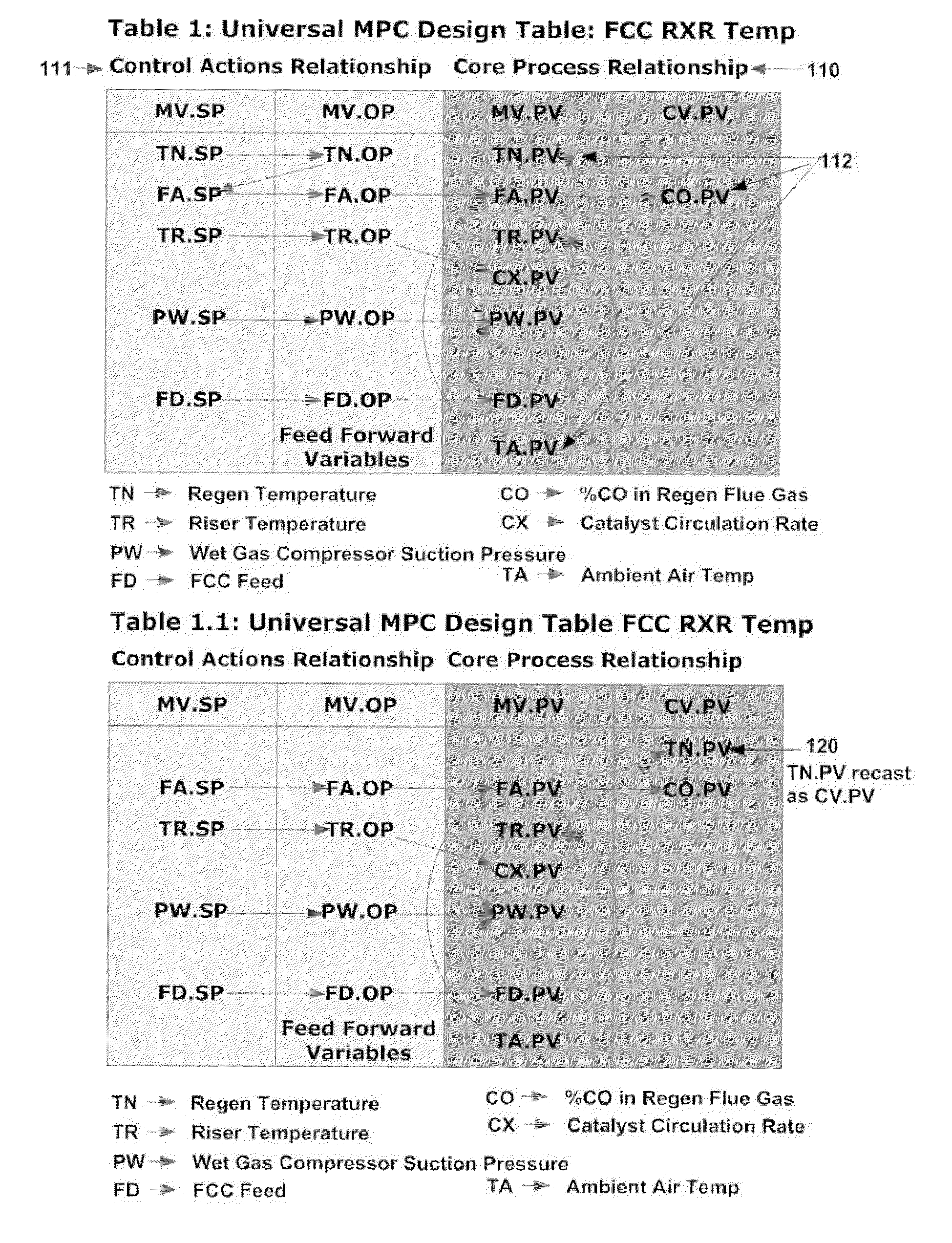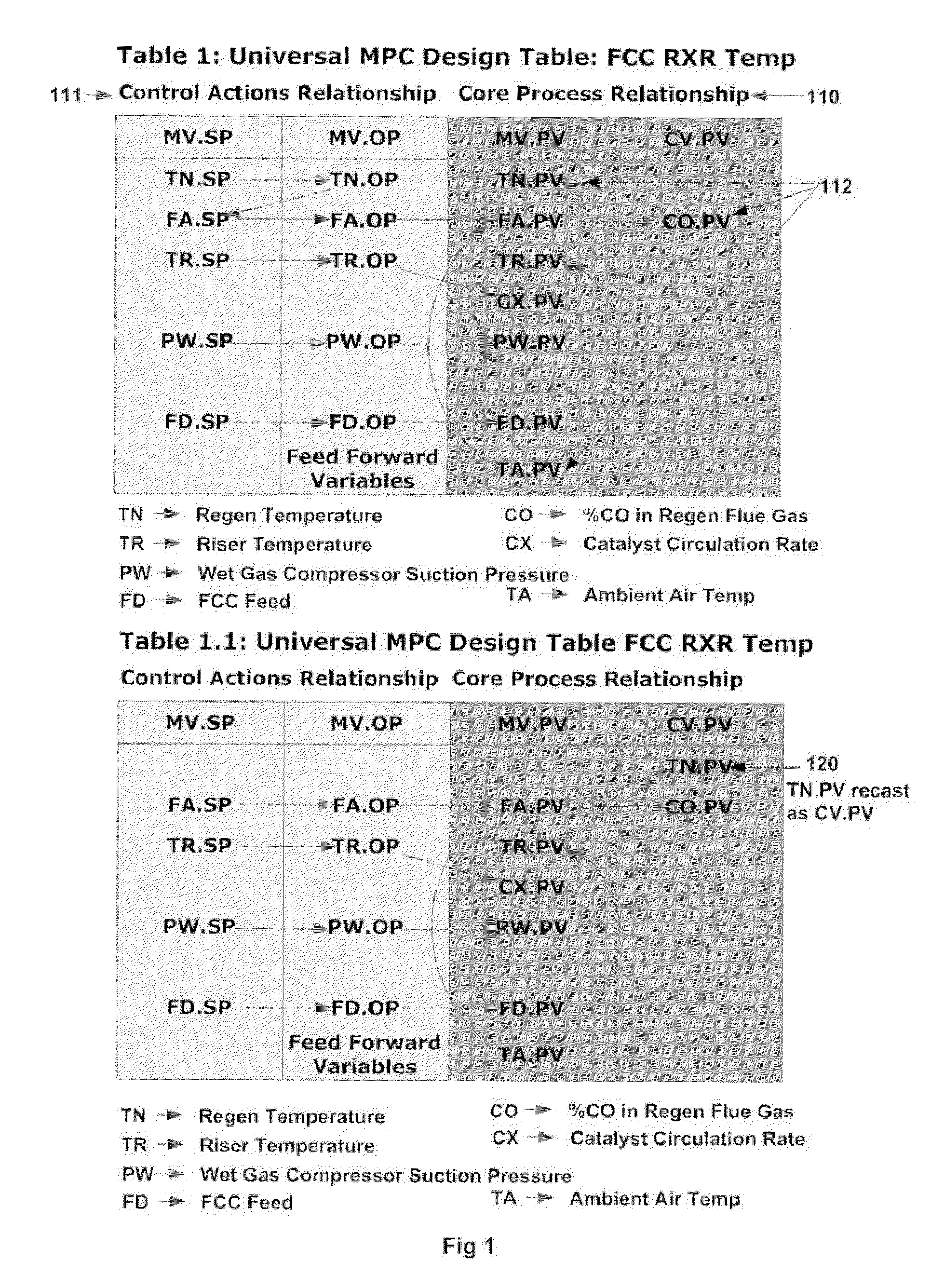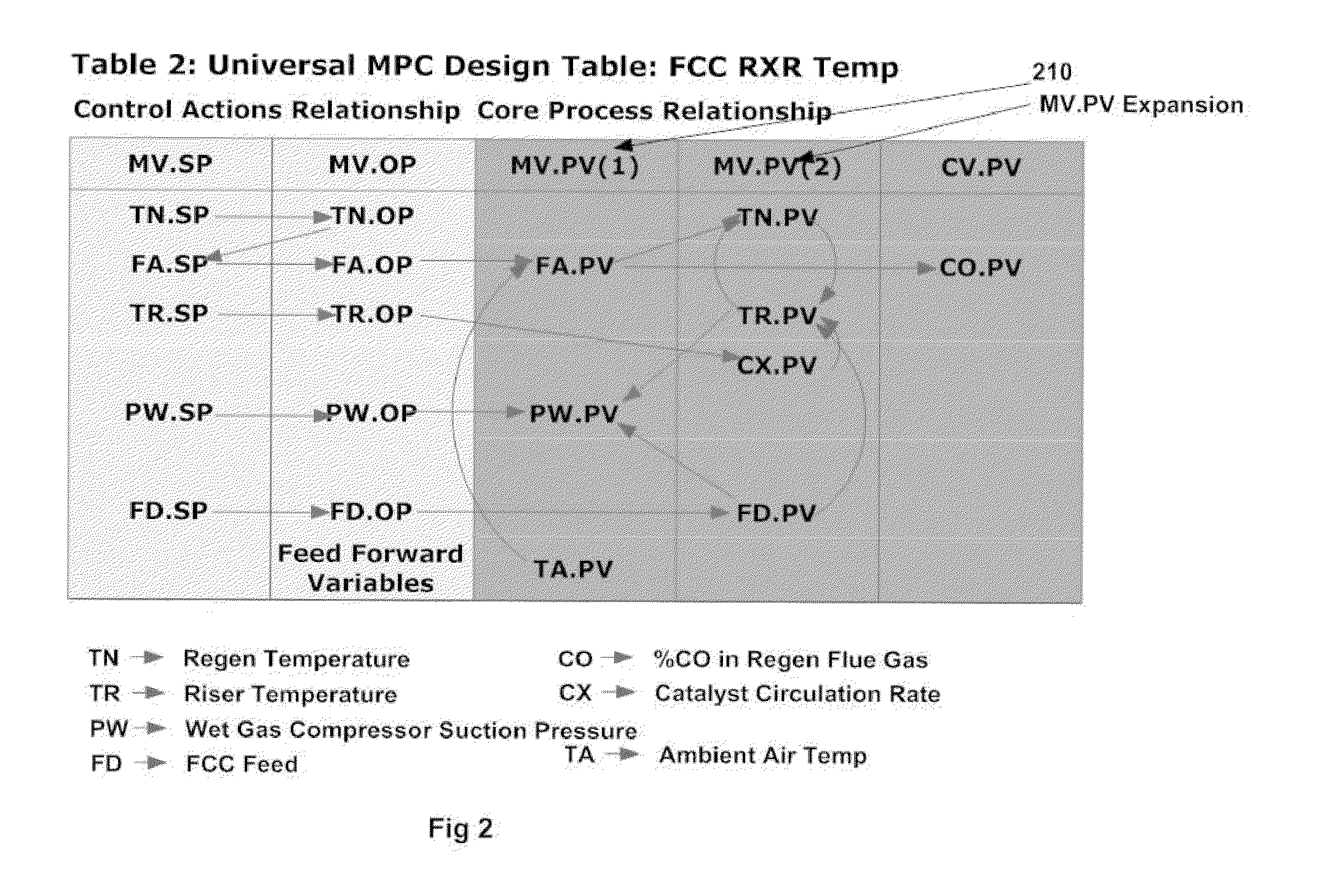Universal model predictive controller
a multi-variable model and controller technology, applied in the direction of electric controllers, instruments, ignition automatic control, etc., can solve the problems of wide spread of inconsistency of design and consequent re-work, undercurrent of weakness, and inability to robustly design
- Summary
- Abstract
- Description
- Claims
- Application Information
AI Technical Summary
Benefits of technology
Problems solved by technology
Method used
Image
Examples
Embodiment Construction
[0031]The present invention characterizes a MPC in terms of its basic variables and their relationships and incorporates them in a design methodology that would result in a consistent and comprehensive specification for composing a MPC and implementing it. The basic premise of the invention is that a badly designed MPC will perform poorly no matter how well it is tuned later. Further, that a MPC not designed in accordance with the core process characteristic of the process will not and cannot perform consistently and reliably.
[0032]In another patent by the present inventor (U.S. Pat. No. 7,187,089), relating to use of core process models in model predictive controller, a process is considered to possess certain innate characteristics that can be modeled as Core Process Models. In particular, it was disclosed that the Core Process Models could be used to derive and update the customary set point based control models used in the prior art model predictive controllers. The present inve...
PUM
 Login to View More
Login to View More Abstract
Description
Claims
Application Information
 Login to View More
Login to View More - R&D
- Intellectual Property
- Life Sciences
- Materials
- Tech Scout
- Unparalleled Data Quality
- Higher Quality Content
- 60% Fewer Hallucinations
Browse by: Latest US Patents, China's latest patents, Technical Efficacy Thesaurus, Application Domain, Technology Topic, Popular Technical Reports.
© 2025 PatSnap. All rights reserved.Legal|Privacy policy|Modern Slavery Act Transparency Statement|Sitemap|About US| Contact US: help@patsnap.com



